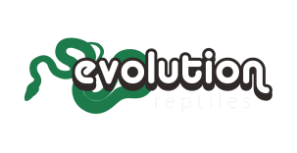The dwarf spiny tail monitor, also known as the ridge tailed monitor or the ‘Ackie’, is found across most of the northern half of Australia. Animals from the northwest of the range are generally described as V. acanthurus acanthurus (red ackies), while animals from the east of the range are described as V. a. brachyurus (yellow ackies).
Because they are such a variable species even in the wild, there is actually very little difference between the two subspecies. Reds tend to grow a little larger, with males recorded at up to 30 inches long, but as a general rule both types grow to between 18 to 24 inches. Males are usually a little bulkier about the head and neck, and have more pronounced spines around the vent; females also have these spines but they are usually softer and smaller. They are unusual in that it is possible to keep them in groups; they are one of the more social species, and have been recorded as living in groups in the wild. However, unless you are sure of the sexes of your monitors, it’s probably wisest to keep them alone.
Because they do not grow as large as many commonly kept monitor lizards, it is possible to provide spiny tail monitors with a comfortable living space without having to dedicate an entire room in your house to them. A single spiny tail monitor will be happy in a 120 x 60 x 60cm (48” x 24” x 24”) vivarium, with a soil based substrate. (A trio will need a 180 x 60 x 60cm/72” x 24” x 24”.) Whilst they do like to burrow, it’s not necessary to give them a deep enough substrate to create a burrow in; as long as they have enough substrate to dig about in they are happy.
In common with all diurnal basking lizards, spiny tails require a very good source of UVB. The easiest way to provide this is with a T5 tube with a reflector that stretches along the majority of the roof of the vivarium. This should be positioned in the centre of the roof, never at the side or halfway down the back.
In order to provide a basking spot of sufficient intensity – remember, these are Australian animals that need a basking spot of 40 to 45ºC – we recommend using a large halogen spotlight on a dimming thermostat.
A night time temperature drop to 18 to 20ºC is recommended. They benefit from a 12 hour on 12 hour off schedule, although it is possible to vary the times from as short as 8 hours daylight in the winter to 14 hours in the summer.
A good varied diet is absolutely recommended for this species, with the emphasis on live feeder insects. They will eat just about anything – but just because they will doesn’t mean they should! Our captive bred animals do far less exercise than their wild cousins, and are at a greatly increased risk of obesity; keep the fatty foods (mince, rodents, dog or cat food) to an absolute minimum, and use very occasionally as a treat.
Crickets, locusts, cockroaches, mealworms, morio worms, fruit beetle grubs, silkworms and calci worms for smaller monitors are all good foods. Don’t forget to feed the bugs! The more variety of food you can use for your feeder insects gives a better range of micro nutrients for your monitor.
Always use a good quality vitamin and mineral supplement to dust the food. We recommend using a good quality multivitamin/multimineral supplement twice a week, and a straight calcium powder the rest of the time. This makes sure that the monitor never gets into the bad habit of ignoring food with powder on it, as food is always dusted.

